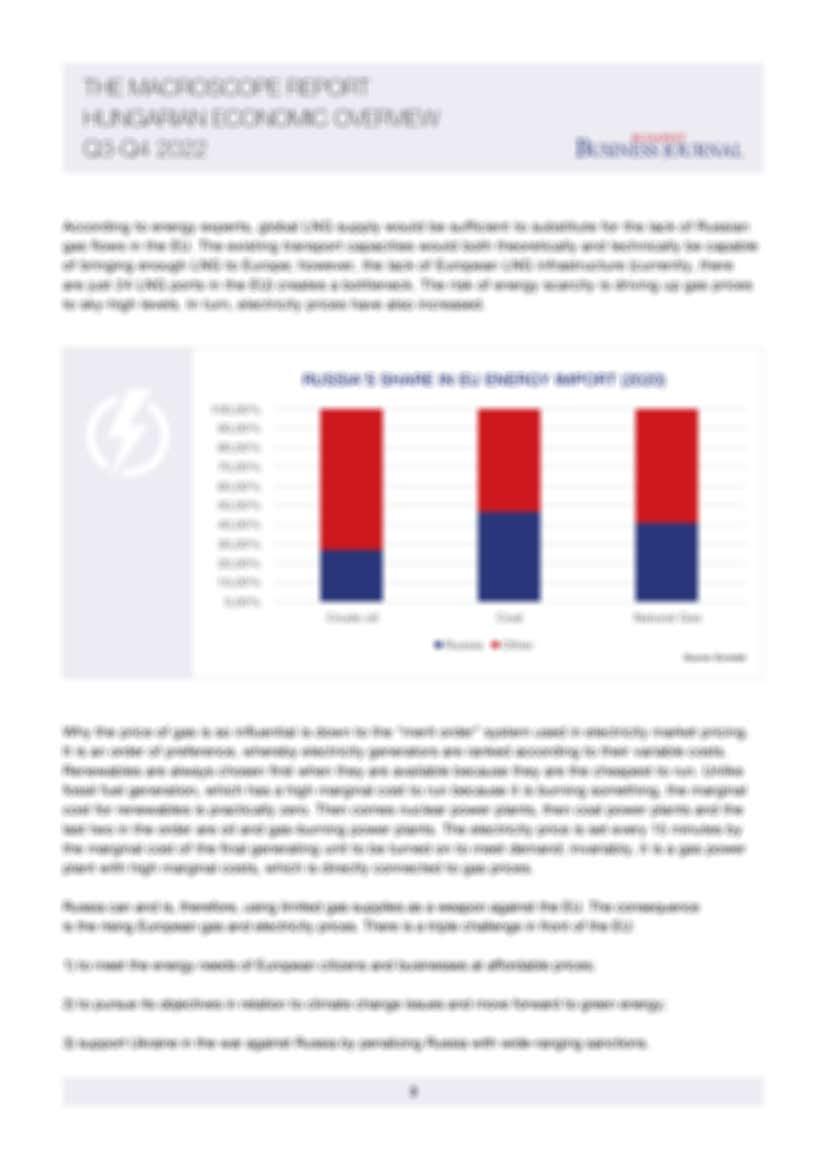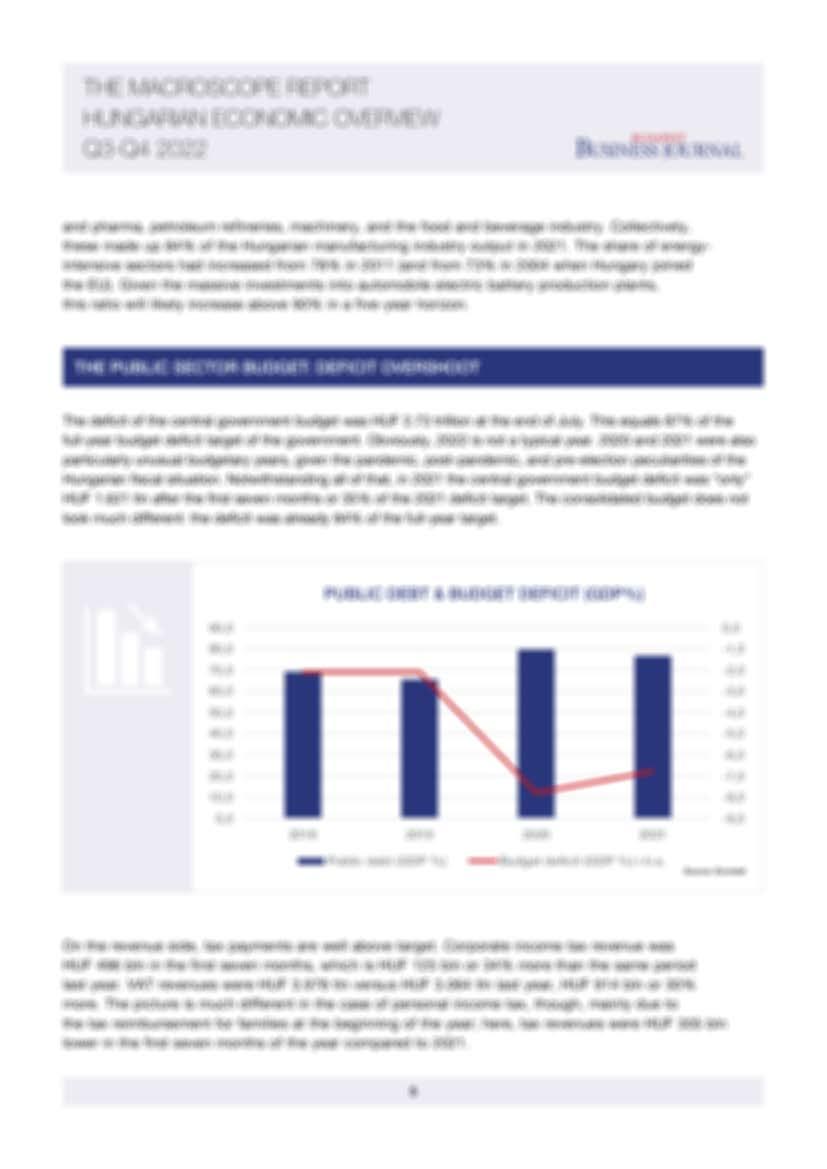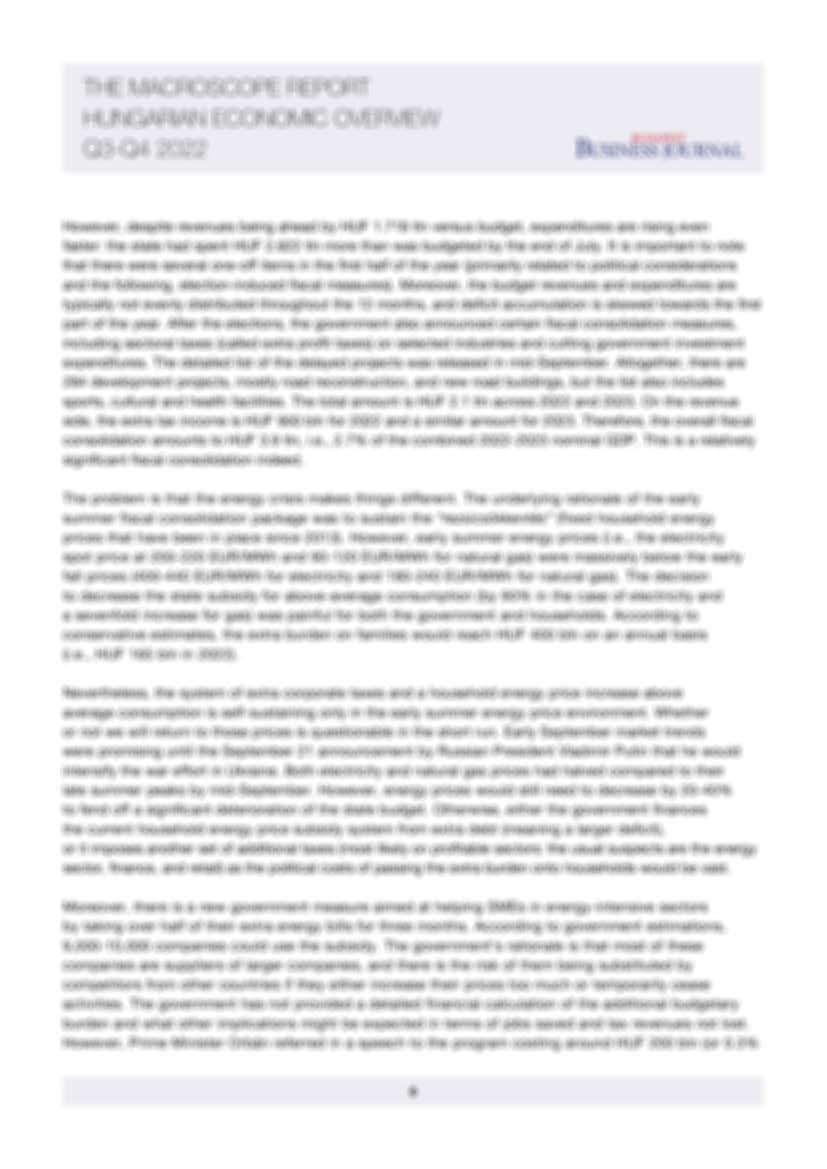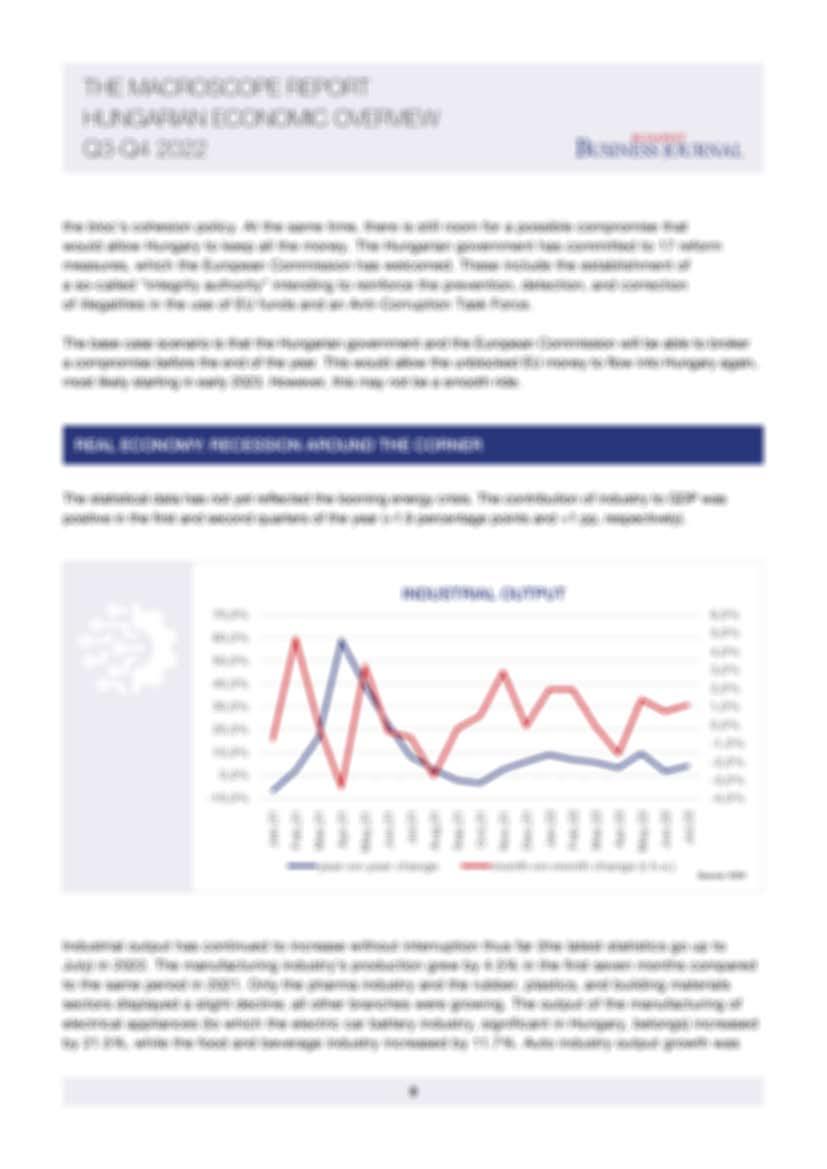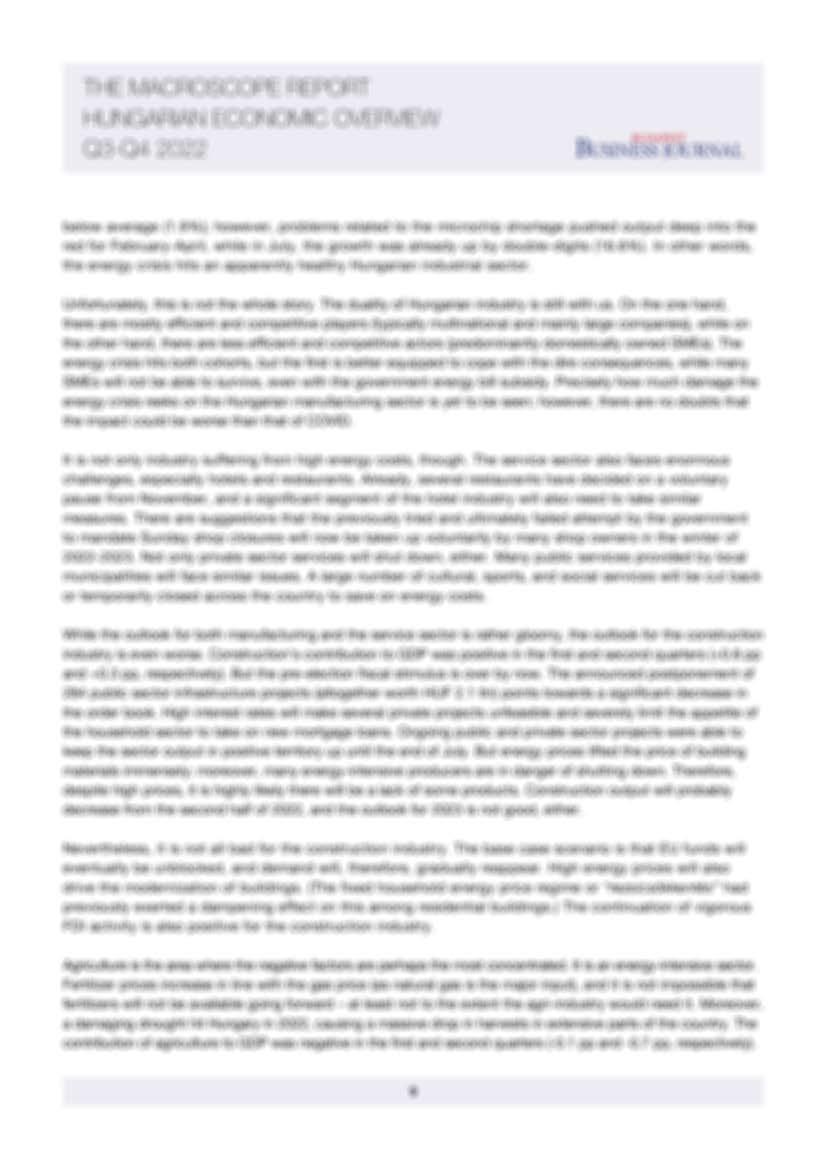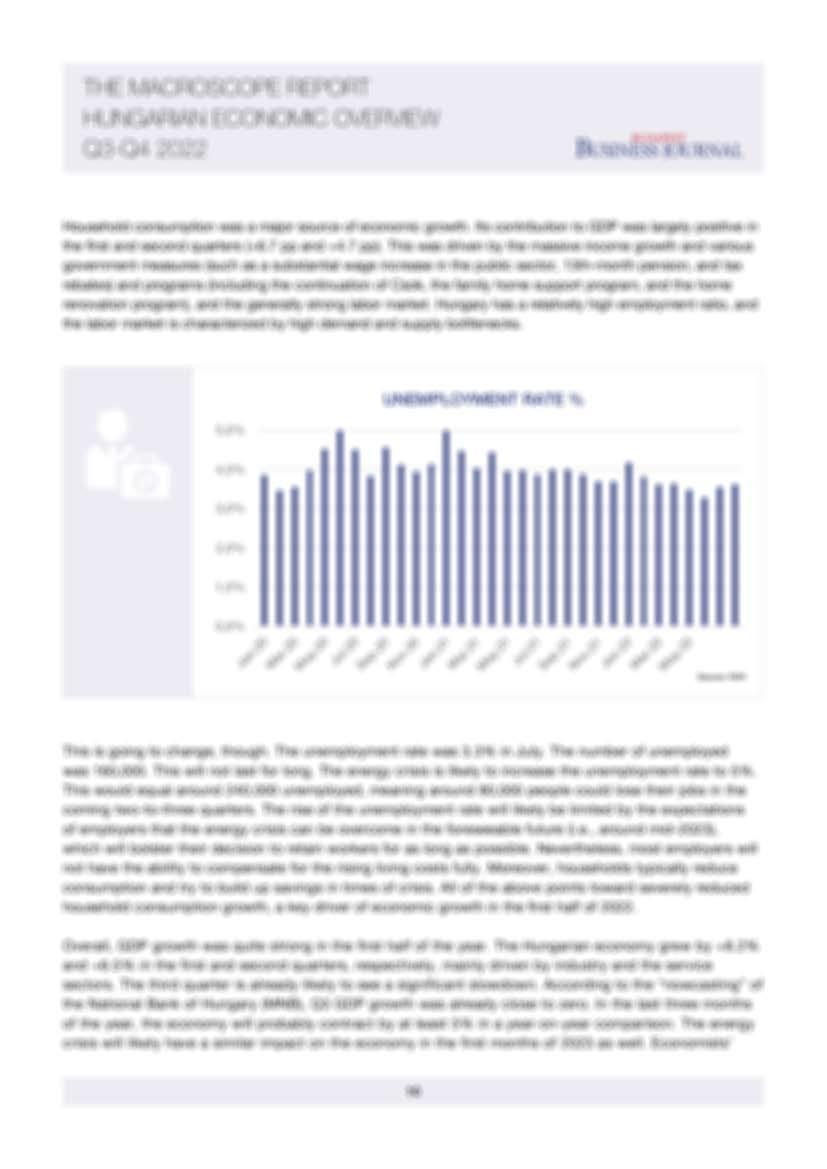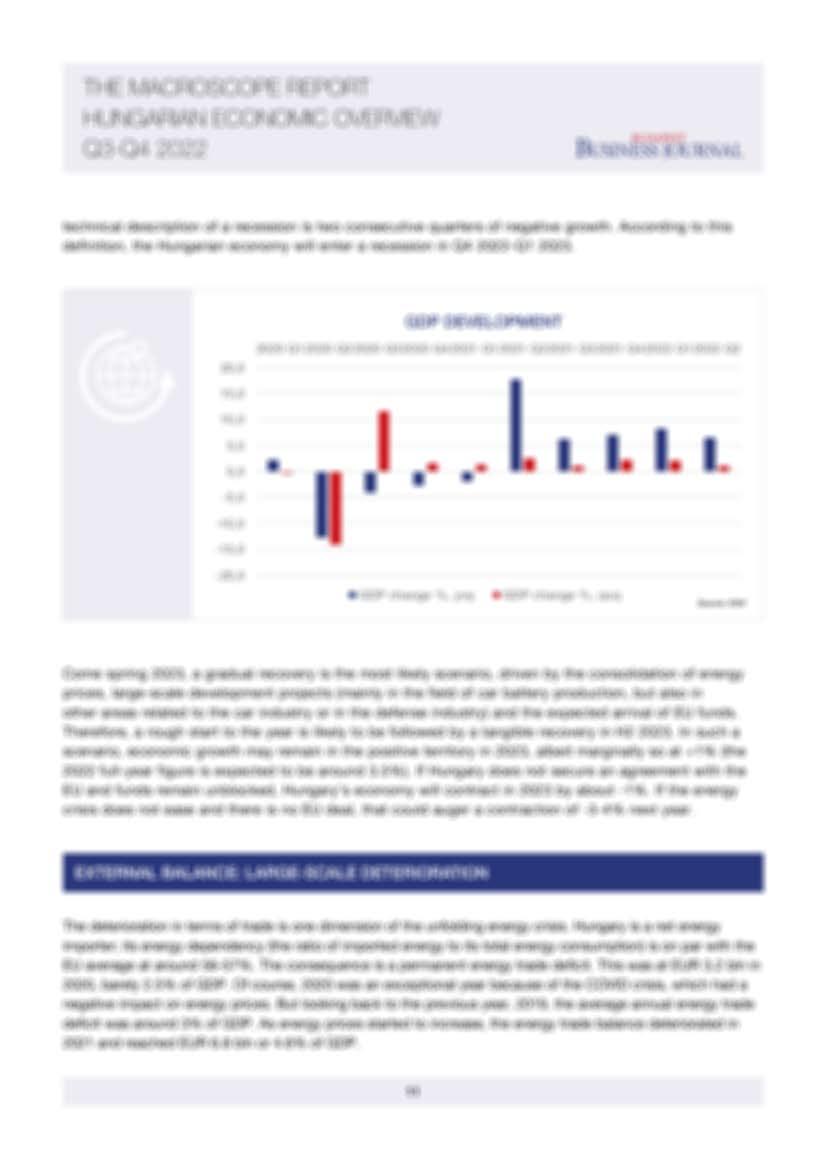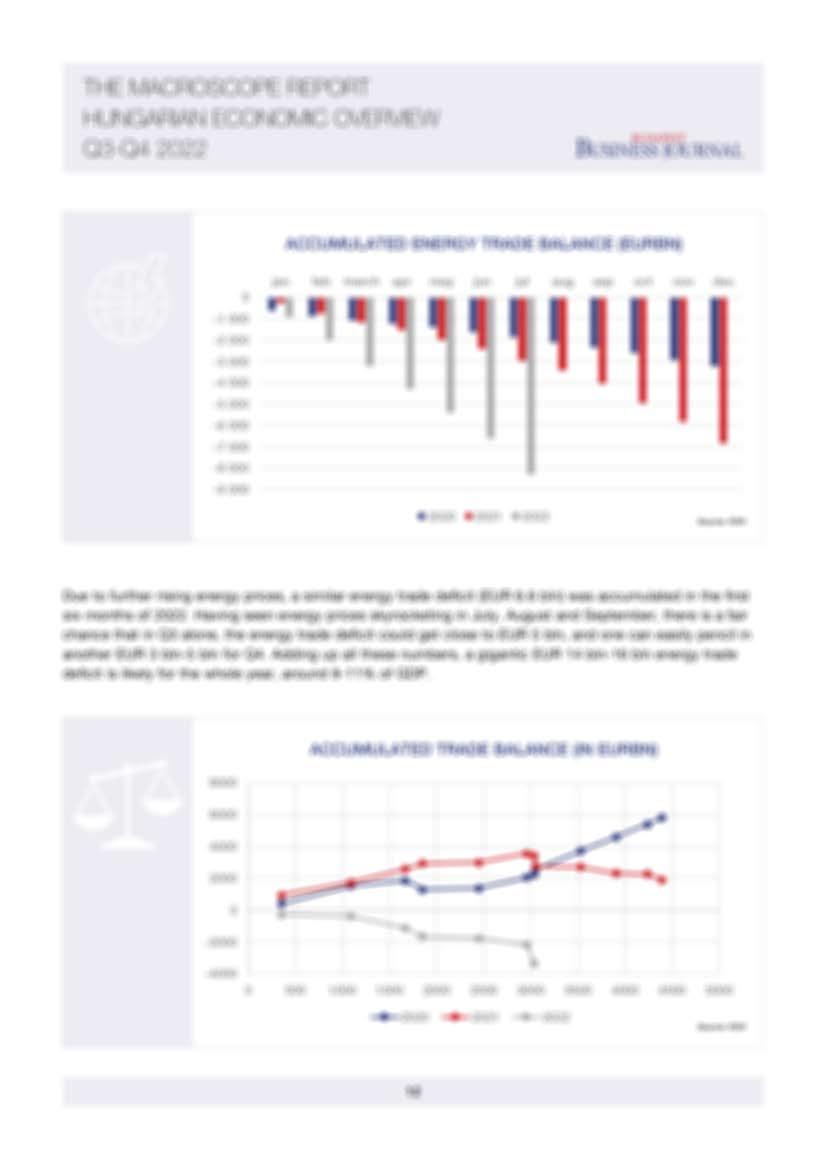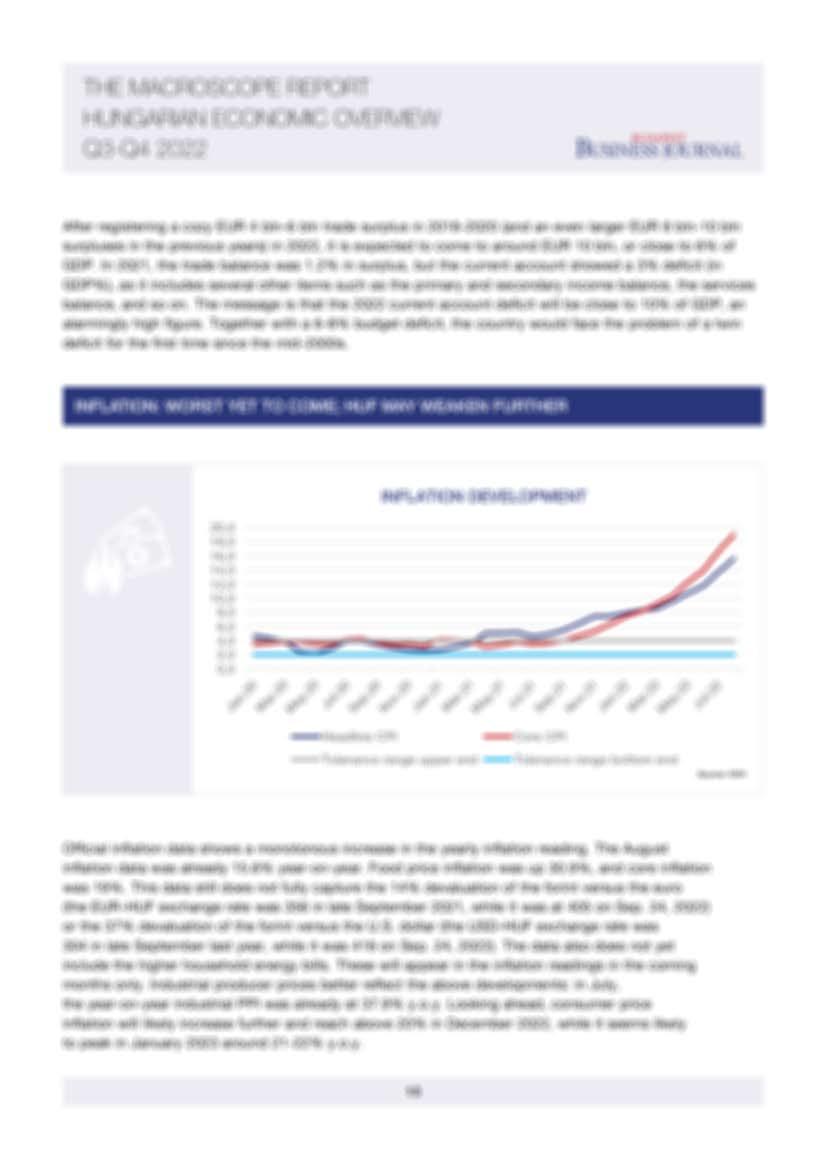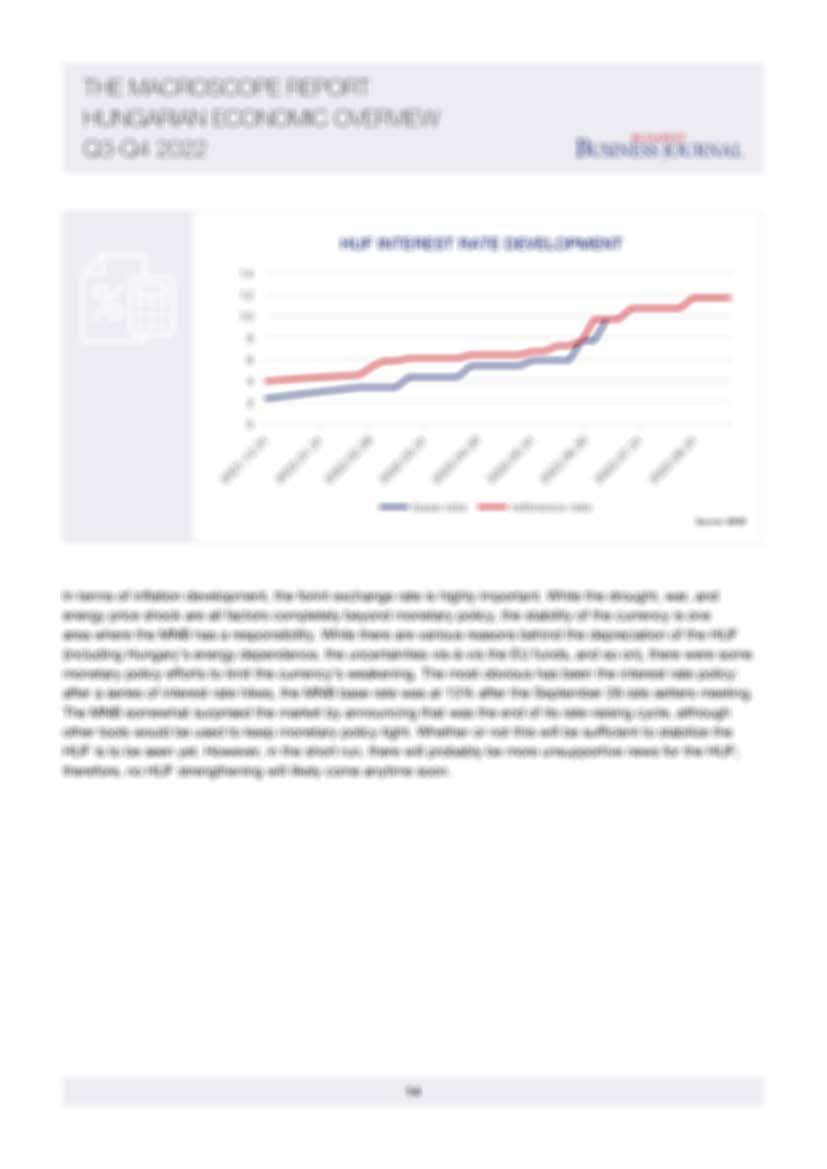A Tale of Two Wars and an Energy Crisis
While the physical war in Ukraine still rages on, the economic war between Russia and the West reached a more intensive and devastating stage in the late summer. In the longer run, the Western sanctions against Russia will seriously impair its economy. However, the short-term energy scarcity and the following massive increase in energy prices have put a significant burden on the economies of EU countries.
A recession in the winter of 2022-2023 is hardly avoidable in the most exposed Central European countries, including Hungary. Even if the region can overcome the supply issues and secure sufficient natural gas (where the bottleneck is the most severe due to the reliance on pipeline gas imported from Russia), the price issue will have a devastating impact on energy-intensive sectors, households and the public budget.
The silver lining is that most of the EU will be detached from Russian energy imports by the following winter. This is less so in the case of Hungary, something that might partly explain the country’s outlier stance vis-à-vis Russia. There is a tightrope for Hungarian politicians to walk as the country is a member of the Western political block (a member of EU and NATO, something that positions Hungary in the enemy camp from the viewpoint of Russia), while it simultaneously aims to maintain both oil and natural gas energy imports from Russia. It has also contracted a Russian partner in Rosatom for its milestone nuclear power plant development (Paks II).
Consequently, Hungary is not fully committed to backing all Western sanctions, which may erode its image as a reliable partner within that camp. At the same time, the security of Russian energy shipments cannot be fully guaranteed, and it could utilize energy shipments as a weapon against Hungary. The difficulties embedded in such an awkward position severely impact the economic outlook and impose certain risks should things work out badly; nevertheless, this might also pave the way for a hefty recovery when the energy crisis eases, potentially starting as early as mid-2023.
WESTERN SANCTIONS ON RUSSIA, RUSSIAN COUNTERACTIONS
As Europe is facing an energy crisis, it is worthwhile looking at how we got here. Energy prices started to increase in late summer 2021 (i.e., well before Russia launched its invasion of Ukraine) due to supply issues. On the one hand, global LNG shipments were being hoovered up by Asia (where the region experienced a fast post-COVID recovery and an increase in its energy demand; therefore, its countries were ready to pay a premium to secure LNG shipments). At the same time, Gazprom announced some temporary gas shipment problems.
THE MACROSCOPE REPORT
1
HUNGARIAN ECONOMIC OVERVIEW Q3-Q4 2022
HUNGARIAN ECONOMIC OVERVIEW Q3-Q4 2022
This was followed by a consolidation of the energy market, which was turned back by the first news of the war. The fact that the EU had a high energy dependency on Russia pushed energy prices up to stratospheric levels. Despite this dependency, Western sanctions were eventually extended to energy. At the May 30-31 EU summit, the European Council agreed to its sixth major package of sanctions, which banned imports of Russian crude oil and petroleum products, with a temporary exception for some crude oil delivered by pipeline (Hungary was one of those countries which got exempted). The package further included bans for three Russian and one Belarusian bank from the Swift, a prohibition on broadcasting in the EU for three Russian media outlets, and sanctions against an additional 65 individuals and 18 entities, including travel bans and the freezing of assets of individuals held responsible for atrocities in Bucha and Mariupol.
These measures were adopted on June 3; Switzerland matched them a week later (June 10). On September 2, G7 finance ministers agreed to finalize and implement a price cap on Russian crude oil and petroleum products. The measure would prohibit the maritime transportation of Russia’s oil and petroleum exports globally unless those products were purchased at or below a specific price.
In retaliation, on June 14, Gazprom said that gas flows through Nord Stream 1 (the most critical pipeline to Western Europe) would be reduced by about 40% with immediate effect: i.e., down to about 100 million cubic meters of gas per day from the full potential of 167 bcm). Officially, the reason was a “failure” by the German engineering company Siemens to provide the required technical assistance on time. One month later, on July 14, Gazprom declared a state of “force majeure” (i.e., that the company could not guarantee natural gas supply due to “extraordinary” circumstances) for several European customers. Later, in early September, Gazprom extended the shutdown of the gas flow on Nord Stream 1, providing no timeframe for a reopening. The company claimed a leak was detected and said the pipeline would not restart until repairs were fully implemented. The reduced supply of Russian gas poses the danger of energy scarcity in the EU in the coming winter.
THE SIGNIFICANCE OF THE EU’S ENERGY DEPENDENCE
The EU is a net energy importer. Its energy dependency, the amount it needs to import, increased from 56.3% in 2000 to 57.5% in 2020. In the case of Hungary, it was 55% in 2000 and had risen to 56.6% in 2020. There is no EU member state with a positive energy trade balance. The ratio was lowest in Estonia (10.6%), followed by Romania (28.2%) and Sweden (33.5%) in 2020. It was highest in Malta (97.6%), Cyprus (93.1%) and Luxembourg (92.5%). Amongst the larger countries, Italy (73.5%), Spain (67.9%), and Germany (63.7%) were all above average, while France (44.5%) and Poland (42.8%) were below the EU average.
If we look at the different types of energy sources, Russia’s share of EU imports was 26.9% in the case of crude oil, 46.7% for coal, and 41.1% for natural gas. Russian coal can be substituted by importing more from the United States, Australia, or South America. For most EU countries, it is equally feasible to source crude oil from somewhere other than Russia. The major problem lies with natural gas, given the reliance on existing gas pipelines from Russia and the insufficient capacities of LNG terminals in the Union.
THE
MACROSCOPE REPORT
2
